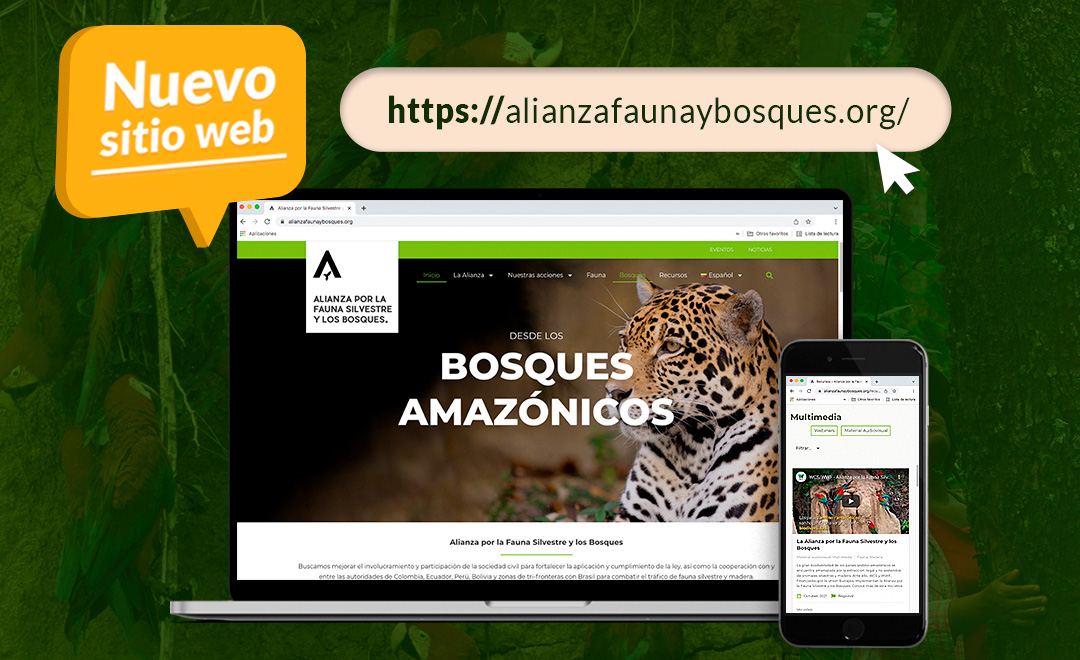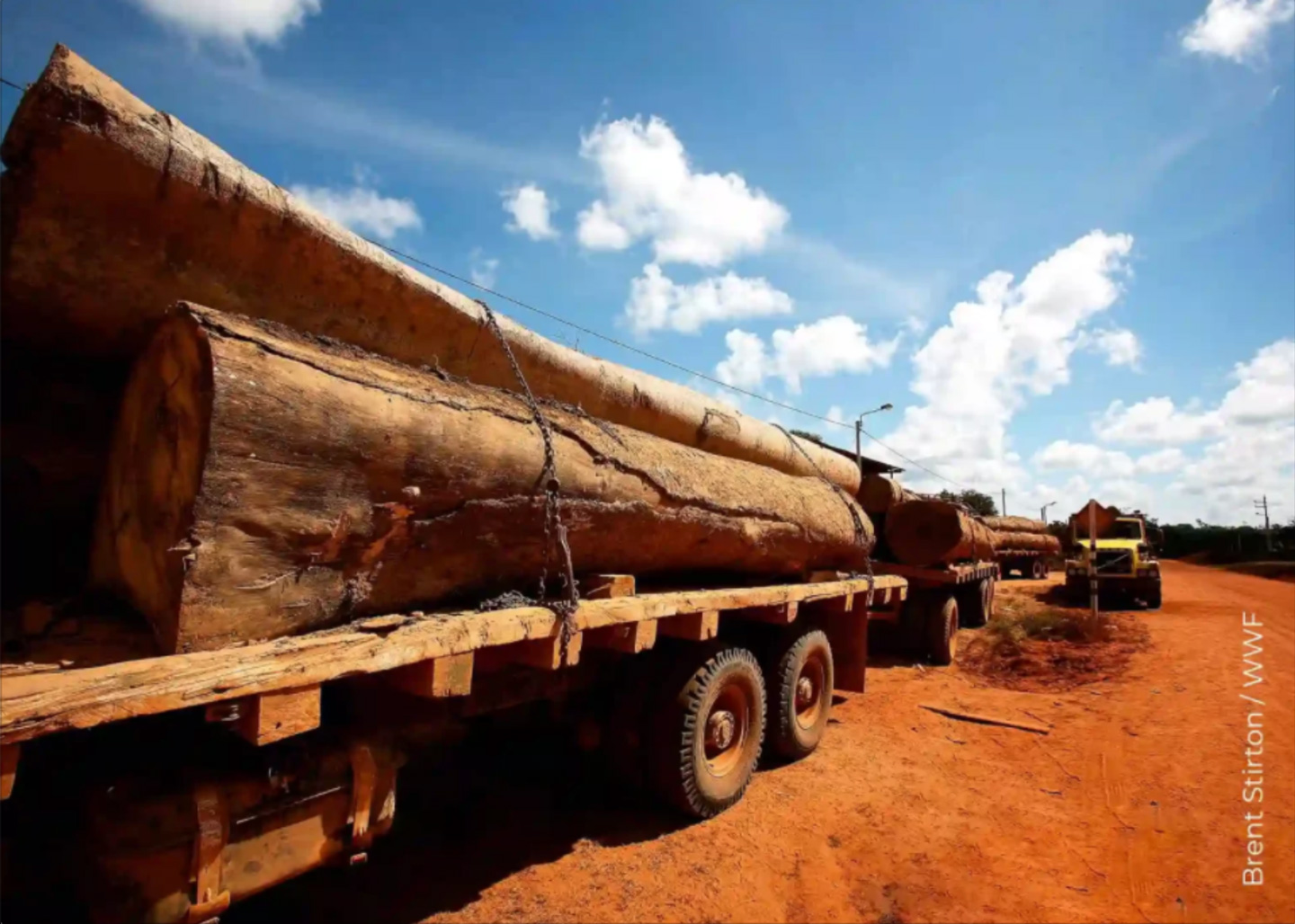By: Ivonne Cueto
The Alliance for Wildlife and Forests developed a website which includes activities, progress, and results of the combat against wildlife and timber trafficking in Colombia, Ecuador, Perú, Bolivia, and Brazil.

Anyone interested in information regarding the actions that are being implemented in Andean-Amazonian countries to combat wildlife and timber trafficking, can now consult the new website of the Alliance for Wildlife and Forests. This alliance is a regional action funded by the European Union and implemented by the Wildlife Conservation Society (WCS) and the World Wildlife Fund (WWF) since 2019. The Alliance for Wildlife and Forests strives to combat wildlife and timber trafficking through the commitment and engagement of civil society to strengthen law enforcement and the cooperation with and among authorities in Colombia, Ecuador, Perú, Bolivia, and tri-border zones with Brazil.
The lack of information on the scope, dynamics, and structure of timber and wildlife trafficking supply chains has been among the main challenges found by Alliance. Thus, this platform arises as an alternative to share the results of the process in which a series of case studies, assessments, and reports have been prepared, which will be available in this information repository.

The new digital platform, therefore, becomes an information center on all the processes that have been undertaken since the beginning of the action in 2019. Users can access updated information and historical memory of activities, products, and results of the Alliance in the region. Furthermore, it provides information on the elements related to wildlife and timber trafficking in the countries where the Alliance is implemented.
This webpage, which can be accessed through the link https://alianzafaunaybosques.org/, contains a variety of resources, among which users can find news, infographics, audiovisuals, campaigns, publications, studies, assessments and reports. These resources are aimed at authorities that enforce law compliance, civil society organizations, academia, the private sector, communication media, communities, digital users, and other public institutions, providing key information about the problems affecting one of the most biodiverse regions in the world.

Key information that can be found
The information found on this website is available in Spanish, English and Portuguese and includes reports and infographics with key data, such as the following:
● In Ecuador, wildlife trafficking is directed mainly to the illegal market as pets and for the consumption of their meat or other subproducts.
● In Colombia, the trafficking of Amazonian turtles (alive and their eggs) is one of the most representative cases. In the period 2010-2018, 9.904 individuals of Yellow-spotted River Turtle (Podocnemis unifilis) and 736 Giant South-American River Turtles (Podocnemis expansa) were seized.
● In Bolivia, the most emblematic case is the trafficking of jaguar parts (Panthera onca), mainly teeth, to Asian markets. Between 2010 and 2020, 673 jaguar teeth were seized in or from Bolivia (with two events in China), which represent the death of at least 168 jaguars.
● In Ecuador, 21% of the timber transformation establishments are illegal, that is, they operate without any type of permit, and they do not have any mobilization permits.
● In Perú, illegal logging represents 40% to 50% of the national production, generating big economic losses.
● In Bolivia, 50% of timber is illegal. Moreover, this country occupies the fourth global place and the second in Latin America in loss of primary forests, as per Global Forest Watch.
● In Colombia, at least 47% of commercialized timber is illegal, according to data from the Ministry of Environment and Sustainable Development.
● 10% of deforestation in Colombia is due to unsustainable logging, as per information of the Institute of Hydrology, Meteorology and Environmental Studies (Ideam). However, the problem goes further, because illegal logging not only contributes to forest loss; it is also the main cause of forest degradation.
● This and more information is available in: https://alianzafaunaybosques.org/
 Photo: web alianzafaunaybosques.org
Photo: web alianzafaunaybosques.org